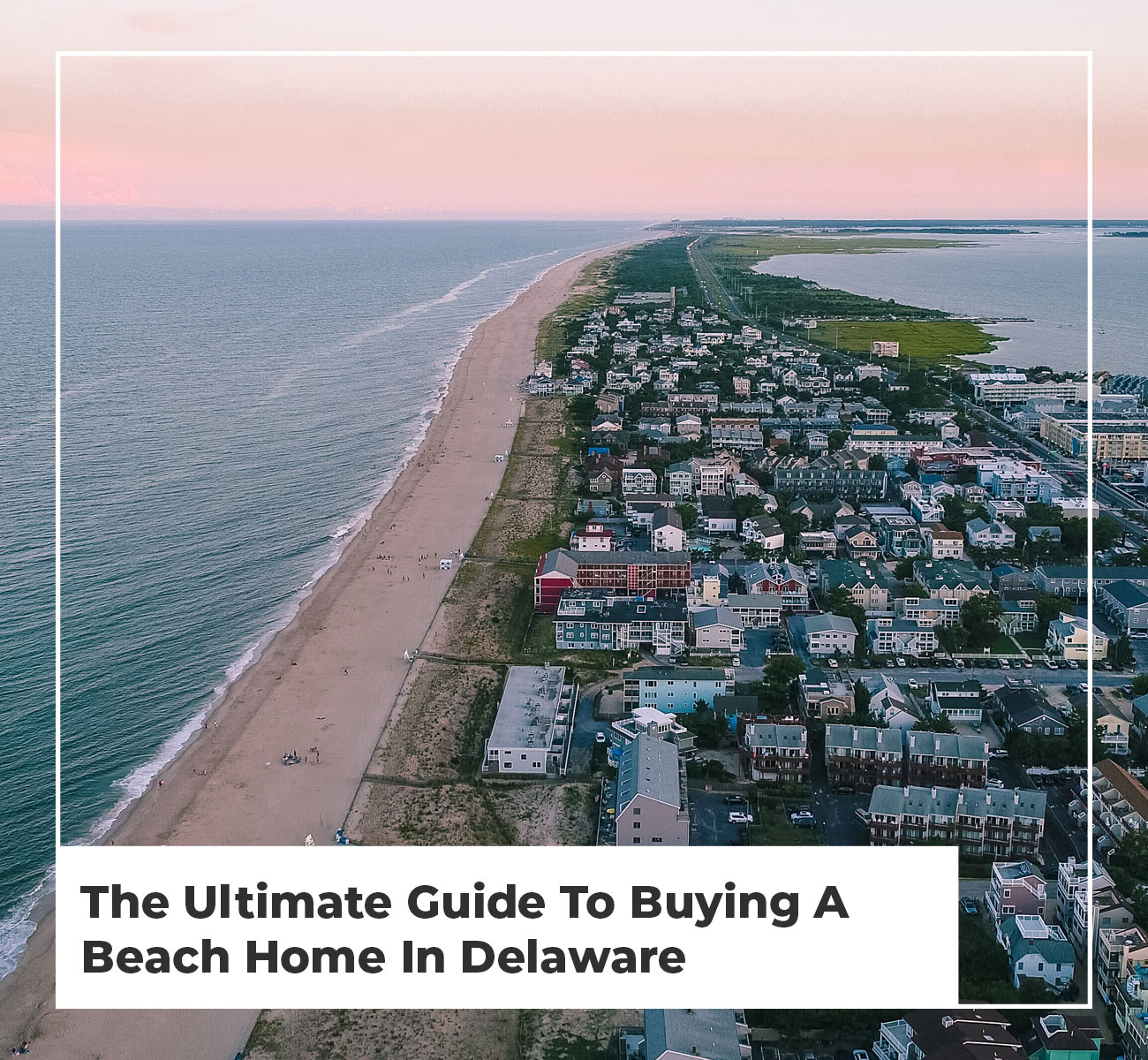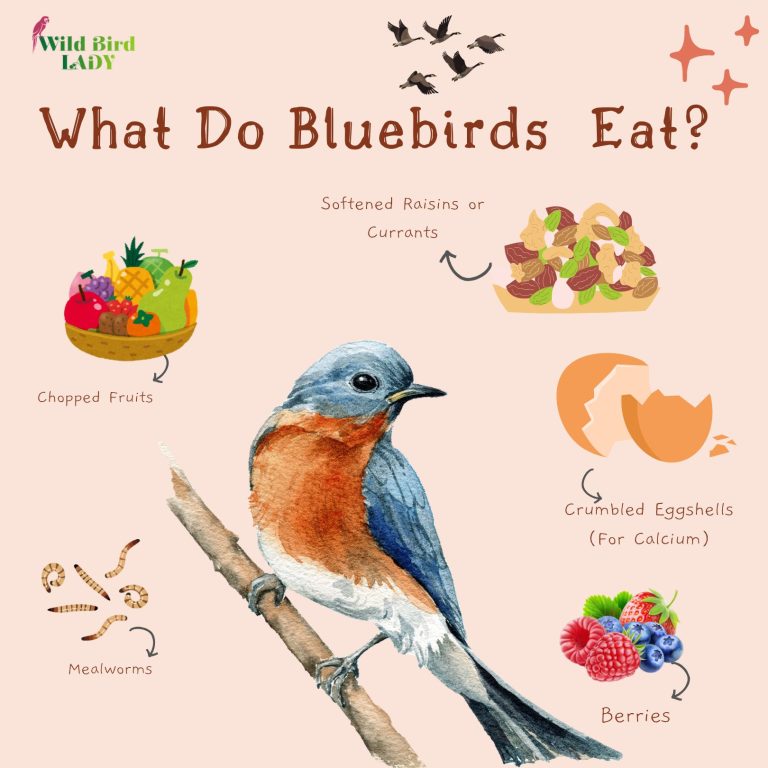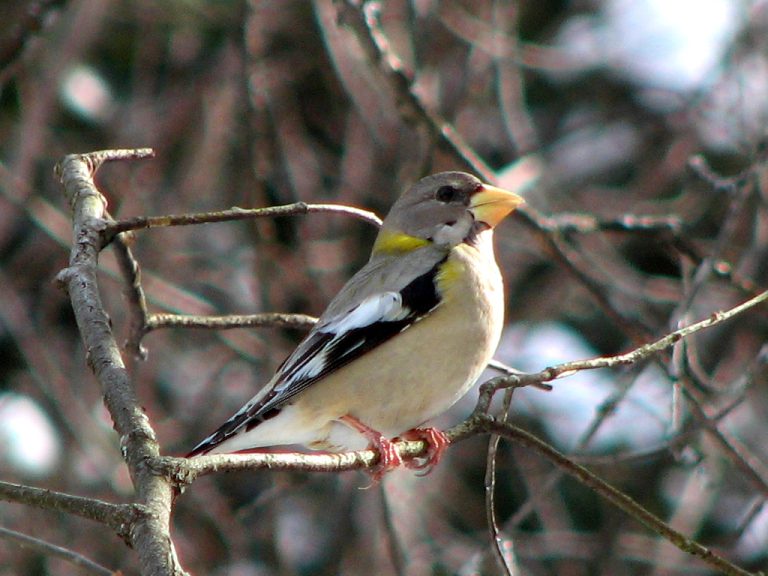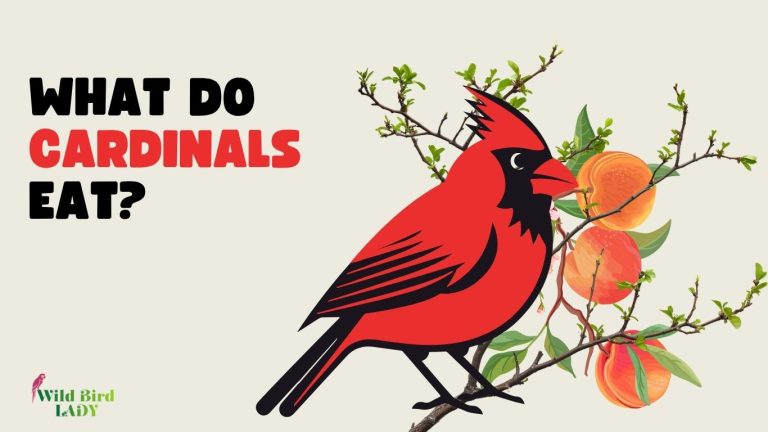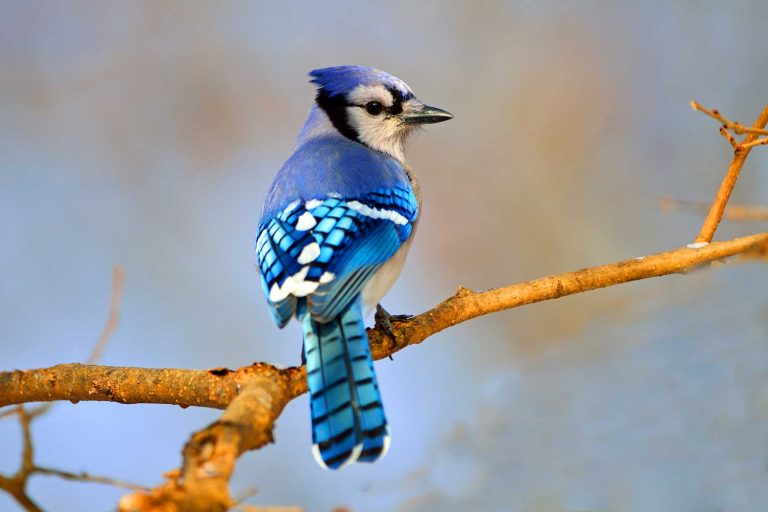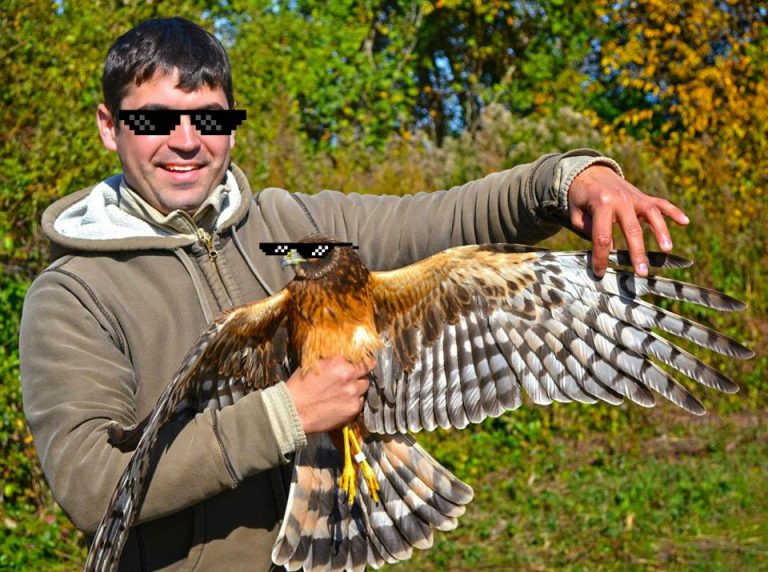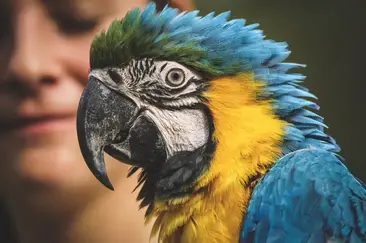The Ultimate Guide to Delaware’s Premier Birdwatching Destinations
The bombay hook national wildlife refuge and cape henlopen state park are the best places for birdwatching in delaware. Delaware is located in the mid-atlantic region of the united states and is abundant in natural reserves and wildlife sanctuaries, making it an ideal destination for bird lovers.
Delaware is very small, but its birding trails offer a variety of habitats for birds, including beaches, wetlands, forests, and grasslands, which attract a wide range of bird species. The bombay hook national wildlife refuge is considered a critical location for migratory birds on the atlantic flyway, while the cape henlopen state park is a perfect spot for birdwatchers to see seabirds.
Both sites offer excellent birdwatching opportunities all year round, and visitors can observe various species of migratory birds, wading birds, songbirds, and raptors. In this article, we will discuss the top places for birdwatching in delaware and provide some valuable tips for birdwatching enthusiasts.
Credit: www.cmlf.com
Why Delaware Is The Ultimate Destination For Birdwatching Enthusiasts
Description Of Delaware’S Unique Geographic Location And How It Results In A Diverse Range Of Habitats
Nestled in the mid-atlantic region, delaware boasts of a unique geographic location that has created a diverse range of habitats for birds. With 11 miles of coastline, marshlands, forests, and urban areas, delaware’s habitat diversity allows birds to thrive in different locations.
Birdwatching enthusiasts can expect to find migratory, nesting, and resident bird species in delaware. Some of the most notable habitats for birdwatching in delaware include:
- The great cypress swamp, which features wetlands and hardwood forests that are home to several endangered species.
- Bombay hook national wildlife refuge, which is a critical stopover point for migratory birds along the atlantic flyway.
- The delaware bay, which plays host to tens of thousands of migrating shorebirds during the spring and fall.
Highlight Of Delaware’S Efforts To Preserve And Protect Its Natural Resources
Delaware’s state and local governments have prioritized the preservation and protection of its natural resources to ensure that birds and wildlife continue to thrive. These efforts have seen the establishment of several protected areas, state parks, and wildlife refuges across the state.
- Delaware division of fish and wildlife, which oversees the management of conservation areas and wildlife habitats across the state.
- Delaware bird-a-thon, which is an annual event organized to raise funds for bird conservation in the state.
- The delaware shorebird project, which sets up protected areas and monitoring programs to ensure the survival of threatened shorebirds in the state.
Examples Of Rare And Endangered Bird Species That Can Be Found In Delaware’S Premier Birdwatching Destinations
Delaware’s wildlife habitats have provided a safe haven for several rare and endangered bird species, making it an ultimate destination for birdwatching enthusiasts. Some of the rare and endangered bird species found in delaware include:
- Delmarva peninsula fox squirrel
- Piping plover, which is a threatened species that breeds along the delaware bay.
- American bald eagle, which was once on the brink of extinction but has made a remarkable recovery thanks to conservation efforts in the state.
Delaware’s geographic location, efforts to preserve and protect natural resources, and rare and endangered bird species make it an ultimate destination for birdwatching enthusiasts. The state’s stunning landscapes and diverse habitat offer a unique opportunity to see and appreciate different kinds of birds.
Top Birdwatching Spots In Delaware
Overview Of Five Premier Birdwatching Destinations In Delaware
Delaware is a small state but it is rich in bird diversity. It is home to many premier birdwatching destinations that offer a chance to explore a wide range of bird species. Here are the top five must-visit birdwatching spots in delaware:
Prime Hook National Wildlife Refuge
Located on the eastern coast of sussex county, prime hook national wildlife refuge is a haven for birdwatching enthusiasts. This refuge covers over 10,000 acres of land and provides a habitat for over 300 bird species. Some of the unique bird species that can be spotted here include:
- Bald eagles
- Peregrine falcons
- Snow geese
- Tundra swans
- Great egrets
Bombay Hook National Wildlife Refuge
Bombay hook national wildlife refuge is another great spot for birdwatching, located in kent county. The refuge is made up of over 16,000 acres of tidal salt marshes, freshwater pools, and forests. Over 250 bird species have been recorded here, including some unusual species such as:
- American avocet
- Black-necked stilt
- Snow bunting
- Marsh wren
- Clapper rail
Cape Henlopen State Park
Cape henlopen state park covers over 5,000 acres of land, located in sussex county. It is home to a diverse array of bird species, thanks to its diverse habitats which include beaches, dunes, and forests. Some of the bird species that can be spotted here include:
- Ospreys
- Great blue herons
- Least terns
- Piping plovers
- Red knots
Delaware Seashore State Park
Delaware seashore state park, located in sussex county, is a 10-mile stretch of beach that provides a habitat for many bird species. Birdwatchers can explore the beaches, inlets, and bays to spot a wide variety of birds. Some of the unique bird species that can be spotted here include:
- American oystercatchers
- Black skimmers
- Northern gannets
- Royal terns
- Sooty shearwaters
Thousand Acre Marsh Wildlife Area
Thousand acre marsh wildlife area, located in new castle county, is one of the best birdwatching spots in delaware. The area covers over 1,000 acres of land, offering a habitat for many bird species. Some of the unique bird species that can be spotted here include:
- Glossy ibis
- American black ducks
- Hooded mergansers
- Saltmarsh sparrows
- Yellow-billed cuckoos
Delaware has many great spots for birdwatching enthusiasts. Each destination is unique, offering its own set of habitats and bird species. Get out there and explore the beauty of delaware’s birdlife!
Prime Hook National Wildlife Refuge
Description Of The Refuges Location And How It Provides Habitats For A Diverse Range Of Bird Species
Located in sussex county, delaware, prime hook national wildlife refuge is a 10,144-acre refuge that encompasses both freshwater and salt marshes, ponds, forests, and dunes, offering the perfect habitat for a diverse range of bird species. This refuge is located just a few miles from delaware bay and is an essential breeding ground for various bird species.
- The refuge’s location makes it the perfect spot for birders who want to see a wide range of bird species.
- Prime hook national wildlife refuge provides various habitats to attract different types of bird species, including freshwater ponds, forests, and dunes.
Highlights Of Birds To Look Out For, Such As The Snow Goose And Bald Eagle
Over 300 bird species have been recorded in the prime hook national wildlife refuge, including both common and rare migratory birds. As you tour the refuge’s different areas, you get to see different types of bird species, including:
- The snow goose is one of the most popular bird species in prime hook national wildlife refuge. You can see a vast flock of these snow-white geese flying overhead during the fall and winter months.
- The bald eagle is another bird species to look out for in prime hook national wildlife refuge. These majestic birds can be seen swooping down over the marshes and ponds looking for their prey.
The Best Seasons For Birdwatching
The best times to visit prime hook national wildlife refuge for birdwatching are fall and winter, but each season comes with unique birdwatching experiences.
- Spring: During spring, you get to see various migratory bird species arriving and breeding in the refuge’s ponds and marshes.
- Summer: Summer is the nesting season, and this is the perfect season to watch bird species caring for their young ones.
- Fall: During fall, you get to see the arrival of migratory bird species such as the snow goose and the american black duck.
- Winter: The winter season attracts many bird species, including the short-eared owl, northern harriers, and the snow bunting.
For birdwatching enthusiasts who want to appreciate delaware’s birdlife, prime hook national wildlife refuge is a must-visit location. With its rich diversity of bird species, lush habitats, and vast wetland areas, birdwatchers have ample opportunities to witness an array of exciting bird species in their natural habitats.
Bombay Hook National Wildlife Refuge
Bombay hook national wildlife refuge is located in smyrna, delaware, and covers 16,000 acres of land. The refuge is well-known for its diverse habitats and is a popular spot for birdwatchers. Here’s everything you need to know to make your visit to bombay hook national wildlife refuge a successful one:
Description Of The Refuge’S Diverse Habitats, Including Tidal Salt Marshes, Freshwater Impoundments, And Grasslands
- Bombay hook national wildlife refuge is home to a variety of habitats, including tidal salt marshes, freshwater impoundments, and grasslands.
- The tidal salt marshes are some of the most productive habitats in the world, and are home to various species of birds, reptiles, and mammals.
- Freshwater impoundments provide crucial breeding grounds for waterfowl, shorebirds, and other aquatic wildlife.
- Grasslands are home to many bird species that depend on open habitats, such as northern harriers, savannah sparrows, and grasshopper sparrows.
Highlights Of Birds To Look Out For, Such As The Great Blue Heron And Snowy Egret
- There is immense birdlife to be seen at bombay hook national wildlife refuge. During the winter months, the wetlands host a range of migrating birds that can only be seen during this time of year.
- The great blue heron is commonly seen in the marshes and wetlands, typically wading through shallow water in search of fish.
- The snowy egret is another graceful bird commonly found in the wetlands, easily recognizable by its stark white feathers and yellow feet.
- Visitors to the refuge can also expect to see a variety of waterfowl, shorebirds, and raptors, including bald eagles, ospreys, and red-tailed hawks.
The Best Seasons For Birdwatching
- The best time to visit bombay hook national wildlife refuge for birdwatching is between the months of october and april when the wetlands are full of wintering birds.
- Some of the most spectacular sightings can be experienced in march and april during the spring migration when thousands of birds flock to the refuge.
- Summer is also a great time to visit as it offers the opportunity to spot breeding birds, such as the great egret and glossy ibis.
- However, it is important to note that the summer months can be hot and humid, and the insects can be quite bothersome.
Cape Henlopen State Park
Cape Henlopen State Park: A Paradise For Birdwatchers
Delaware may be small, but it is home to many diverse bird species, making it a perfect place for birdwatching. Cape henlopen state park, located at the mouth of delaware bay, offers bird lovers a unique opportunity to observe a variety of birds in their natural habitats.
Here’s what you need to know:
Description Of The Park’S Unique Beach, Dune, And Salt Marsh Habitats And How They Attract Bird Species
Cape henlopen state park covers an extensive area of more than 5200 acres consisting of beautiful beaches, sand dunes, and salt marshes along the atlantic coastline. Here are some key features that make the park a haven for birds:
- The miles of sandy beaches provide a perfect spot for shorebirds to forage for food.
- The dunes create a natural habitat for a variety of bird nests and a shelter for migratory birds.
- The salt marshes provide a home for a vast array of wetland birds like herons, egrets, and ducks.
Highlights Of Birds To Look Out For, Such As The Piping Plover And Red Knot
Cape henlopen state park is host to a variety of bird species, making it an exciting place for bird enthusiasts to explore. The following are some highlights of the birdlife that can be spotted at the park:
- Piping plover: This small bird species is listed as endangered in some regions but can be seen nesting on the sandy beaches of cape henlopen state park.
- Red knot: This long-distance migratory bird can be spotted in flocks along the beaches during spring and fall migration.
Other notable bird species in the park include snowy egret, great egret, green-winged teal, osprey, and northern harrier, among others.
The Best Seasons For Birdwatching
The best time to visit cape henlopen state park for birdwatching is in the spring and fall when migratory birds are passing through the area. During these seasons, the park is bustling with activity as birds migrate from their breeding grounds in the north to their wintering grounds in the south.
Whether you’re an experienced birdwatcher or just starting, cape henlopen state park is a great place to spot a diverse array of birds in their natural habitats. So pack your binoculars and head over to this birding paradise for an unforgettable birdwatching experience.
Delaware Seashore State Park
Located on the delaware coast, delaware seashore state park offers birdwatchers a vast array of diverse shorebird habitats to observe and enjoy. Here are some key points to know about this must-visit birding destination:
- Delaware seashore state park covers over 2,800 acres and sits between rehoboth beach and dewey beach.
- It features six miles of coastline, including beaches, dunes, and marshes, providing a range of environments for birds to thrive.
- For those interested in viewing birds, the park’s salt marshes are a haven for wading birds, shorebirds, and waterfowl.
- A must-see for birdwatchers, delaware seashore state park is home to the threatened and federally protected piping plover, as well as numerous other bird species.
Highlights Of Birds To Look Out For
Delaware seashore state park is home to an abundance of bird species, from raptors and songbirds to shorebirds and waterfowl. But some species stand out as highlights for birdwatchers. Here are a few to keep an eye out for:
- American oystercatcher: This large, iconic shorebird is an exciting sight to see with its striking orange and black bill and bright yellow eyes.
- Sanderling: These small, energetic shorebirds are known for their quick movements and constant foraging on the beach.
- Piping plover: The endangered piping plover is a rare sight and a highlight for birdwatchers. They nest on the beach and can be seen darting along the shoreline.
Best Seasons For Birdwatching
While birding can be enjoyed at delaware seashore state park year-round, some seasons are better than others depending on what birds you hope to spot. Here are the ideal times to visit for optimal birdwatching opportunities:
- Fall migration: September-november, as many species use delaware seashore state park as a rest stop on their journey south.
- Winter waterfowl: November-february, when a variety of ducks, geese, and swans winter along the delaware coast.
- Spring migration: April-june, when bird activity picks up again as species return north to their breeding grounds.
Delaware seashore state park is an excellent destination for birdwatchers of all skill levels and interests. With its diverse habitats, interesting species, and beautiful setting, this park is sure to please bird enthusiasts and nature lovers alike.
Thousand Acre Marsh Wildlife Area
Thousand Acre Marsh Wildlife Area: Delaware’S Birdwatching Hotspot
If you’re a birdwatcher, heading to delaware’s thousand acre marsh wildlife area is a must-do. With its diverse and well-preserved habitat, the wildlife area is a haven for birds and birdwatchers alike.
Description Of The Wildlife Area’S Location And Diverse Habitat Of Forest, Tidal Marsh, And Meadow
Thousand acre marsh wildlife area is located in the town of port penn, new castle county, delaware. The area spans over 1000 acres and is famed for its scenic beauty and diverse habitat. Here’s a brief overview of the habitat you should expect to encounter:
- Forest: There are several pockets of forested areas in the wildlife area. These areas are home to several species of woodpeckers, including the yellow-bellied sapsucker and downy woodpecker.
- Tidal marsh: Majority of the area is tidal marsh. You can expect to see several shorebirds, such as the semipalmated sandpiper and black-bellied plover, here. You can also sight the secretive american bittern skulking through the tall marsh grass.
- Meadow: The area’s meadows are home to grassland birds such as the northern harrier and meadowlarks.
Highlights Of Birds To Look Out For, Such As The American Bittern And Northern Harrier
The birdwatching experience at thousand acre marsh wildlife area can be an unforgettable one. Here are some of the highlights, and the birds you should look out for:
- American bittern: The american bittern is one of the most uncommon birds to find. It is a secretive bird that is well-camouflaged in the marsh grass, but if you are lucky, you will see it move slowly and deliberately through the reeds.
- Northern harrier: The northern harrier is a unique raptor to watch. It is an agile bird that glides low and slow over the meadows, hunting for prey. If you see one, you’re likely to see a male’s faded gray wings and a female’s distinctive brown body and wings.
- Woodpeckers: The abundant trees provide an ideal habitat for woodpeckers. You may spot the pileated woodpecker, the largest woodpecker in north america, drumming into a tree trunk.
- Shorebirds: The tidal mudflats are home to a variety of shorebirds, including sandpipers, plovers, and willets.
The Best Seasons For Birdwatching
The birding at the thousand acre marsh wildlife area is year-round, with each season offering something different. Here are the best seasons to maximize your birdwatching experience:
- Spring: From march to may, the area is a favorite stopover for migrating birds, making it a perfect time to spot several warblers species and yellow-billed cuckoo.
- Summer: The summer season is the best time to spot nesting birds. The common yellowthroat and song sparrow are a common sight in this season.
- Fall: The area is a stopover site for several migratory shorebirds. In the fall, you can expect to encounter black-bellied plovers, short-billed dowitchers, and red knots in good numbers.
- Winter: Though winter is relatively quiet, you may have the chance to spot the northern harriers, short-eared owls, and sometimes rare peregrine falcons.
Thousand acre marsh wildlife area is undoubtedly among the best birdwatching spots in delaware, thanks to its diverse habitat and surrounding environment. Whether you are a professional birder or a casual birdwatcher, this area is definitely worth exploring.
Tips For Successful Birdwatching In Delaware
The Best Places For Birdwatching In Delaware
If you are an avid bird watcher, delaware offers some excellent spots to observe a variety of species in their natural habitat. From the bombay hook national wildlife refuge to the delaware seashore state park, the first step towards a successful bird watching experience is choosing the right spot.
In this post, we’ll provide you with tips for successful birdwatching in delaware, including what essential items to bring, birdwatching etiquette and how to respect wildlife, and tips to enhance your birdwatching experience.
Description Of Essential Items To Bring For Birdwatching In Delaware
There are a few essential items that you should bring when going on a birdwatching trip in delaware. Packing light is key, but you don’t want to forget anything necessary to make your trip successful. Here are some of the essentials you should bring:
- Binoculars:
Binoculars are a must-have item for birdwatchers of any experience level. Investing in a lightweight, high-quality pair will help you get a close-up view of the birds without disturbing them. Moreover, you can spot the species hidden on the top of tall trees contrasting the lush greens.
- Field guide:
A field guide will help you identify different bird species in delaware. Having a detailed book in hand strengthens your birdwatching game with enlightening information and images. There are numerous field guidebooks available online which are concise and pocket-fitting.
- Camera:
Having a camera enables you to capture the variety of birds you see and bring your bird-watching experience home. Moreover, you can share your experience with fellow birdwatchers and friends.
- Appropriate clothing:
Dressing appropriately for the weather and bringing your rain gear can prepare you for the unexpected weather changes at any time. Wear boots, if necessary, which are suitable for muddy trails required in the bird watching reservoirs or facilities.
Explanation Of Birdwatching Etiquette And How To Respect Wildlife And Other Birdwatchers
It’s crucial to understand birdwatching etiquette and how to respect both the birds and other birders around you. Follow these birdwatching etiquette guidelines to have a successful bird watching experience:
- Respect the birds’ privacy:
It’s important to approach the birds quietly and avoid any sudden movement to avoid scaring them off.
- Avoid crowded spaces:
While birdwatching, try not to crowd around other birders, causing noise pollution which may disturb the birds and create a safety problem for the other bird watchers.
- Stay on the trail:
Birds make their homes in natural habitats which we need to preserve. Stay on designated paths, so as not to damage the habitat and disturb their environment.
- Bring back your thrash:
Please bring back your garbage, water bottles, snack wrappers in a bin. Don’t leave them scattered in the birding area.
Tips For Enhancing Birdwatching Experience
Anyone who’s watched a bird going about its business knows how remarkable these creatures can be. However, sometimes we need a little help when it comes to spotting birds, identifying species, and getting a better look. Below are some tips to enhance birdwatching experiences:
- Observe bird behavior:
It helps to understand the behavior of different bird species, which will increase the possibility of spotting them.
- Accurately heard and observed vocalization:
Birds communicate with others by singing or calling. It’s not about recognizing the sound but also deciphering the message behind it.
- Preferred lighting:
It is best to do bird watching in the morning or evening when the lighting is ideal, and the birds are mostly active. It’s low light, so the colors and details on the bird’s feathers are more visible.
- Awareness of range and habitat distribution:
Birds’ habitats and ranges vary. Understand their correct habitat distribution to spot different bird species easily.
- Be patient:
Most importantly, have the patience to explore the area slowly and lookout for different bird species. Take a break, relax and wait for the birds to fly by.
With these tips and tricks, beginner birders and long-time enthusiasts can make the most of their birdwatching trips in delaware. Ensure that you prepare appropriately, respect the wildlife and other birders, and spend time observing and thoroughly enjoying the beauty and behavior of the fantastic birdlife in delaware.
Frequently Asked Questions On “The Best Places For Birdwatching In Delaware”
What Are Some Popular Birds To Look Out For In Delaware?
Some popular birds to look out for in delaware are the bald eagle, osprey, great blue heron, and northern pintail.
What Is The Best Time Of Year To Go Birdwatching In Delaware?
The best time of year to go birdwatching in delaware is during the spring and fall migration season, when many different bird species are passing through the state.
Where Are The Best Locations For Birdwatching In Delaware?
The best locations for birdwatching in delaware are bombay hook national wildlife refuge, cape henlopen state park, and prime hook national wildlife refuge.
What Should I Bring With Me While Birdwatching In Delaware?
When birdwatching in delaware, it is essential to bring binoculars, a field guide, comfortable shoes, and appropriate clothing for the weather.
Can Beginners Join A Birdwatching Tour In Delaware?
Yes, beginners can join a birdwatching tour in delaware where experienced guides can help them identify different bird species and provide expert advice.
Are There Any Birdwatching Etiquettes In Delaware?
Yes, while birdwatching in delaware, it is important to be respectful of the birds’ habitat and avoid disturbing them. Keep a safe distance, keep quiet, and follow park rules while observing these beautiful creatures.
Conclusion
Overall, delaware offers some of the most breathtaking birdwatching spots in the country. As one of the most ecologically diverse states on the east coast, delaware attracts an array of bird species throughout the year. Whether you are a novice or seasoned birder, there are plenty of places to explore and discover.
From coastal marshes to inland forests and meadows, delaware’s birding hotspots provide a diverse range of habitats to suit all interests. In addition, birding offers a range of mental health benefits as well, including reducing anxiety and stress and increasing mindfulness and present-moment awareness.
So, grab your binoculars and your field guide, head out to the great outdoors and immerse yourself in delaware’s fabulous birdwatching opportunities. Who knows? You might be surprised at what you discover.
Published on August 6, 2023 | Last Updated on June 26, 2025 by Rifat Ahmed

